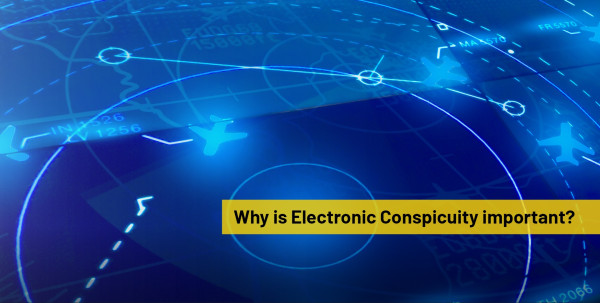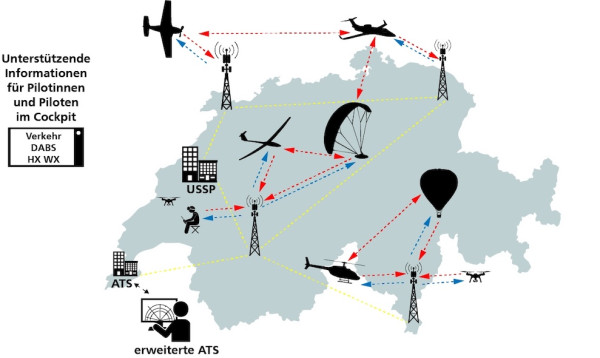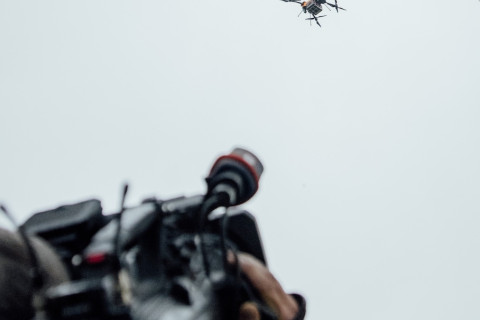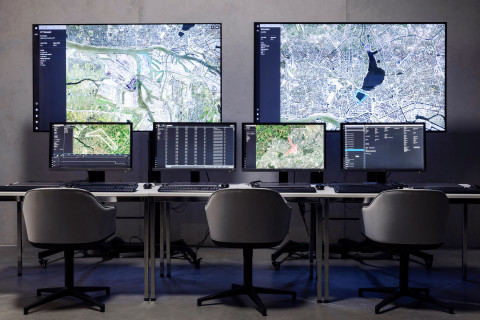Electronic Conspicuity: Advancing Airspace Modernization

Electronic conspicuity (EC/e-conspicuity) is one of the primary means to support airspace modernization. By ensuring that the vast majority of airspace users can operate in a cooperative environment where they can electronically seen each other, means more aircraft can be integrated into the airspace efficiently - including new entrants in the lower and upper airspace.
In particular, as drones become more prevalent, their safe operation beyond visual line of sight in the same airspace as manned aircraft is a growing concern and challenge.
The deployment of electronic conspicuity solutions to account for the increase in traffic volume, as well as the different traffic mix, is a complex regulatory challenge.
The ultimate goal is to assure the airspace target level of safety by enhancing situational awareness, detecting and avoiding collisions, and facilitating a safe and efficient airspace - for a fair access for all users.
Why is Electronic Conspicuity important?
1. Cooperation between all airspace users
- By equipping all manned aircraft with electronic conspicuity systems (such as ADS-B transmitters or other similar technologies), cooperative and coordinated traffic in the airspace becomes simpler and safer for all stakeholders involved.
- The right mix of technology and airspace requirements is yet to be validated (e.g. iConspicuity solutions for crewed aircraft operating in U-Space airspace), but it should be obvious that non-cooperative traffic presents a serious hindrance to safe and efficient drone integration.
- In the European Union, the concept of U-space has been put into regulation early on facilitate to safe integration of drones into the airspace.
- U-space is a system of new services and specific procedures designed to support safe, efficient, and secure access to airspace for large numbers of drones.
- Electronic conspicuity is a key component of U-space, ensuring that drones and crewed aircraft operating therein can be detected and deconflicted effectively.
- In some regions, regulations are being developed that require aircraft to have electronic conspicuity capabilities, especially when operating in certain airspace classes or near airports.
- For example, general aviation might be required to be equipped with EC solutions to retain the right-of-way when operating at a very low level in uncontrolled airspace.
- Although those regulatory changes have yet to be enacted, the emerging trend is becoming clearer every day: conspicuity is the key to integration.
- Some more advanced electronic conspicuity systems can be used to provide critical information to support on-board deconfliction and collision avoidance systems (such as hybrid ACAS/ACAS X).
- This capability allows for a drastically increased level of safety in those airspace where such an increase is required.
- Drone operations will benefit from increased automation and economies of scale when they are permitted in an integrated manner and Beyond Visual Line of Sight.
- For this goal to be achieved, ensuring machine-readable visibility is crucial.
- Electronic Conspicuity is emerging as one of the key building blocks of this vision.
In summary, for drone operations to become more frequent, automated, affordable, useful, and efficient, electronic conspicuity is the key precursor for enabling unmanned systems to safely integrate into the shared airspace.
Ensuring that manned air traffic is visible to UAS operators and drones are visible to air traffic management systems is essential.

Learn More About Electronic Conspicuity
As defined by the UK Civil Aviation Authority (CAA), electronic conspicuity is an umbrella term for technologies that enhance the visibility of aircraft within airspace by electronically signaling their presence.
EASA's i-conspicuity project has analyzed the requirements and assessed actions to enable Interoperability of Electronic Conspicuity Systems for General Aviation.
Paths to implementation:
The Swiss Federal Office of Civil Aviation FOCA wants to establish a fully networked airspace by 2035. To this end, the FOCA has published a list of recommended technologies to Standardize airspace users’ electronic visibility to make the sky safer.
Get in Touch with HHLA Sky
Discover how HHLA Sky is safely and efficiently coordinating unmanned with manned aviation in U-spaces. Email us at sky@hhla.de or contact your personal representative.


